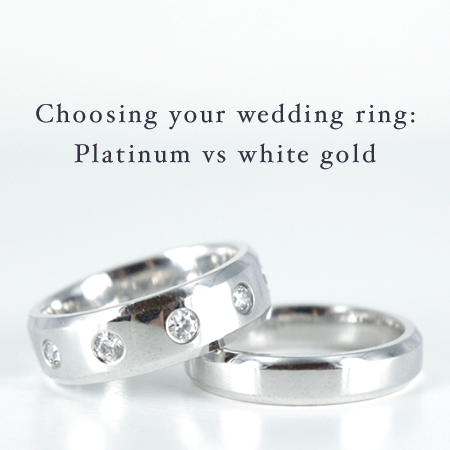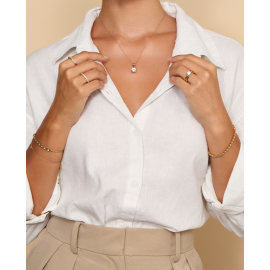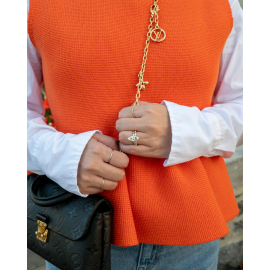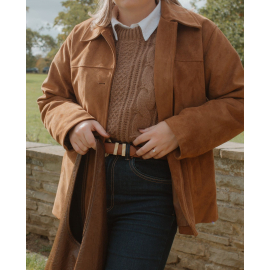Price match guarantee

We’ve teamed up with Klarna to provide flexible payment options, allowing you to shop the way you want. With Klarna, you can split your payment into 3 instalments or choose to pay later, making your shopping experience smoother and more convenient. Your order total must be between £100 and £499 to qualify.

We’ve teamed up with Klarna to provide flexible payment options, allowing you to shop the way you want. With Klarna, you can split your payment into 3 instalments or choose to pay later, making your shopping experience smoother and more convenient. Your order total must be between £100 and £499 to qualify.

January 29, 2019 | by Admin
It is law within the UK that every item of precious metal sold such as Platinum, Gold, Silver is stamped labelling the item with the type of metal it is. Platinum pieces which weigh less than 0.5 grams, 18ct Gold and Palladium pieces weighing less than 1.0 gram and Silver pieces weighing less than 7.78 grams are except from hallmark.
At Diamonds Factory all our products are hallmarked as per UK hallmarking law from London Assay Office (The GoldSmith Company)
The Goldsmiths' Company Assay Office is the oldest assay office in the United Kingdom. It has provided hallmarking services since The Goldsmiths' Company was founded in the 1300s. The company received its royal charter in 1327 and ranks 5th in order of precedence of the 12 Great Livery Companies of the City of London.
Hallmarking dates back to the 1300s when Edward I of England passed a law requiring any item made of silver, which was offered for sale, to be at least of equal quality as that of the coin of the realm (silver currency). The wardens of The Goldsmiths' Company were tasked with visiting workshops in the City of London to assay (test) silver articles. If these articles were found to be below standard they were originally destroyed and the metal forfeited to the King. If they passed, each article received the King's mark of authentication - the mark of a leopard's head. By 1478, there were several hundred workshops and merchants manufacturing silver articles in the City of London. It was not possible for the wardens to visit them all so the merchants were ordered to bring their items to Goldsmiths' Hall for testing and marking and a permanent Assay Office was established in the building. This is the origin of the term hallmark - struck with the King's mark at Goldsmiths' Hall.
In 1544 the Goldsmith's Company adopted the King's mark as their town mark and the mark of the leopard's head is now internationally recognised as the mark of this assay office.
The Goldsmiths's Company Assay Office is still based at Goldsmiths's Hall and remains the oldest company in Britain to be continually trading from the same site. However, it also has two satellite offices; at Greville Street in Hatton Garden in the heart of the London jewellery quarter and within a high security complex near London's Heathrow airport. It now has a new off-site facility within the Dalston-based jewellery manufacturer, Allied Gold. This is the first time in the Assay Office's 700 year history that it has opened permanent hallmarking services on a customer's premises.
In addition to hallmarking, the office has now expanded its range of services to support the jewellery trade and enforcement authorities. It offers a variety of specialist analytical services including nickel, lead & cadmium testing, antique silver dating, non-destructive compositional analysis, plating thickness measurement and a melt and assay service for scrap precious metal carried out in their fully independent on-site laboratory. Other services offered are a jewellery valuation service, laser marking, trading standards assistance, high quality photography and a comprehensive range of training and educational seminars, lectures and specialist events.






Picking out a wedding ring is a big step in any happy couple’s relationship, but deciding which one to commit to can be challenging. With a plethora of stunning designs to choose from, it’s easy to use your own judgement when it comes to how it looks.
Choosing the type of metal used for your band, however, is another matter entirely. Often overlooked, there’s actually a big difference between platinum and white gold rings despite them looking very similar.
If you’re not sure which one to go for, keep reading this handy guide to platinum vs white gold wedding rings. We explore everything from how both of them are made to how well they’ll fare in the long run.
What is a Platinum Ring?
Platinum is a naturally white metal that is both harder to find and more durable than gold. It’s used in a much purer form than white gold, which is why it’s typically more expensive.
The durability of platinum is one of the many reasons why it’s a popular choice for wedding rings, with many believing it to be completely scratch proof. While this is technically true, it doesn’t mean your ring will be completely free of blemishes.
Platinum wedding rings tend to develop ridging over time due to how often they are worn. This is completely natural and isn’t seen as a negative thing. Many people embrace the antique look it gives a ring, affectionately dubbing it ‘the patina of age’. The patina effect is caused by the metal moving from one place to another and is more likely to occur if the ring is worn every day, as a wedding ring usually is.
What is a White Gold Ring?
Unlike platinum, white gold is seen as a man-made metal, as it doesn’t exist naturally. Many people don’t realise this and believe it to be cheaper simply because it’s a more common metal. In reality, white gold is a mixture of yellow gold and white metal alloys which is then dipped in rhodium. This rare silver metal makes a beautifully smooth coating on the ring, giving it an eye-catching shine.
Pure gold is naturally very soft, which is far from what you want from a wedding ring. Mixing gold with a more durable metal prevents the ring from bending and losing its shape over time.
If you’re interested in how much pure gold is actually in your ring, turn your attention to the number of carats it has. Often abbreviated to a single ‘K’, the number refers to the level of pure gold in the jewellery. You may have heard the term ‘24k’ referred to in songs and films; this number refers to pure gold and is, therefore, the top end of the scale. The most common carat measurements are 9k (37.5% pure gold), 14k (58%) and 18k (75%).
Benefits of White Gold:
How to Choose Between a White Gold or Platinum Wedding Ring
Despite looking very similar, there’s a lot to consider when choosing between white gold and platinum. They behave differently in most aspects, even having an effect on the comfort of the ring. It may be tempting to go for the cheapest option available but there are plenty of other things to look into that may change your mind.
Durability
As already noted, platinum is the strongest and heaviest metal of the two. Although it can develop ridging over time, this tends to bring more character to the ring. The patina effect is viewed as desirable, giving it a vintage effect over time that many people want to achieve. If you like the sound of platinum but want a shiny ring with no patina, you may have to get it rebuffed when the ridging starts to show.
White gold does look incredibly similar to platinum, in fact, you may not be able to tell the difference at first glance. Unfortunately, the rhodium cover can fade, resulting in a slightly yellow hue over the once white band. Don’t worry though, this is easily fixed by taking a trip to your local jewellers to ask them to re-plate and re-polish the ring to return it to its former glory.
Cost
Despite looking very similar, white gold is usually cheaper than platinum. This is mainly due to the fact that platinum is used in a much purer form. Although it’s outrightly cheaper, you will have to get white gold rings recoated by a professional every once in a while to stop them looking tarnished and yellow.
Platinum is more expensive but requires less maintenance than white gold, unless you want to professionally buff out the patina marks. Find out more about how much you should pay for a wedding ring.
Engraving
Don’t worry if you want to put a special message or date in your ring - both white gold and platinum can be engraved with no issues.
Comfort
Whether or not you like a heavy ring is a personal choice, so the comfort aspect is hard to judge without trying rings on. Platinum rings are the heavier of the two, making white gold a great option for those who prefer something more lightweight.
People with allergies should be careful when purchasing a white gold ring. Platinum is completely hypoallergenic but some people react to the nickel alloy often used to produce white gold. However, you won’t have to worry about that when you purchase from Diamonds Factory as our white gold is completely nickel-free.
Explore our luxurious yet affordable range of wedding rings to find the perfect bands for you and your partner, or head to our other blog post to learn how to clean your diamond rings at home.
Low Dome Comfort Fit Classic Plain Wedding Band
From £58
2.20mm Studded Flat Profile Diamond Shaped Band
From £277